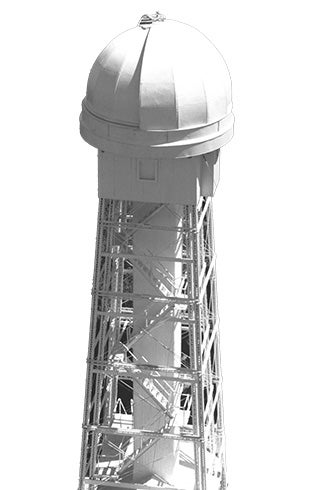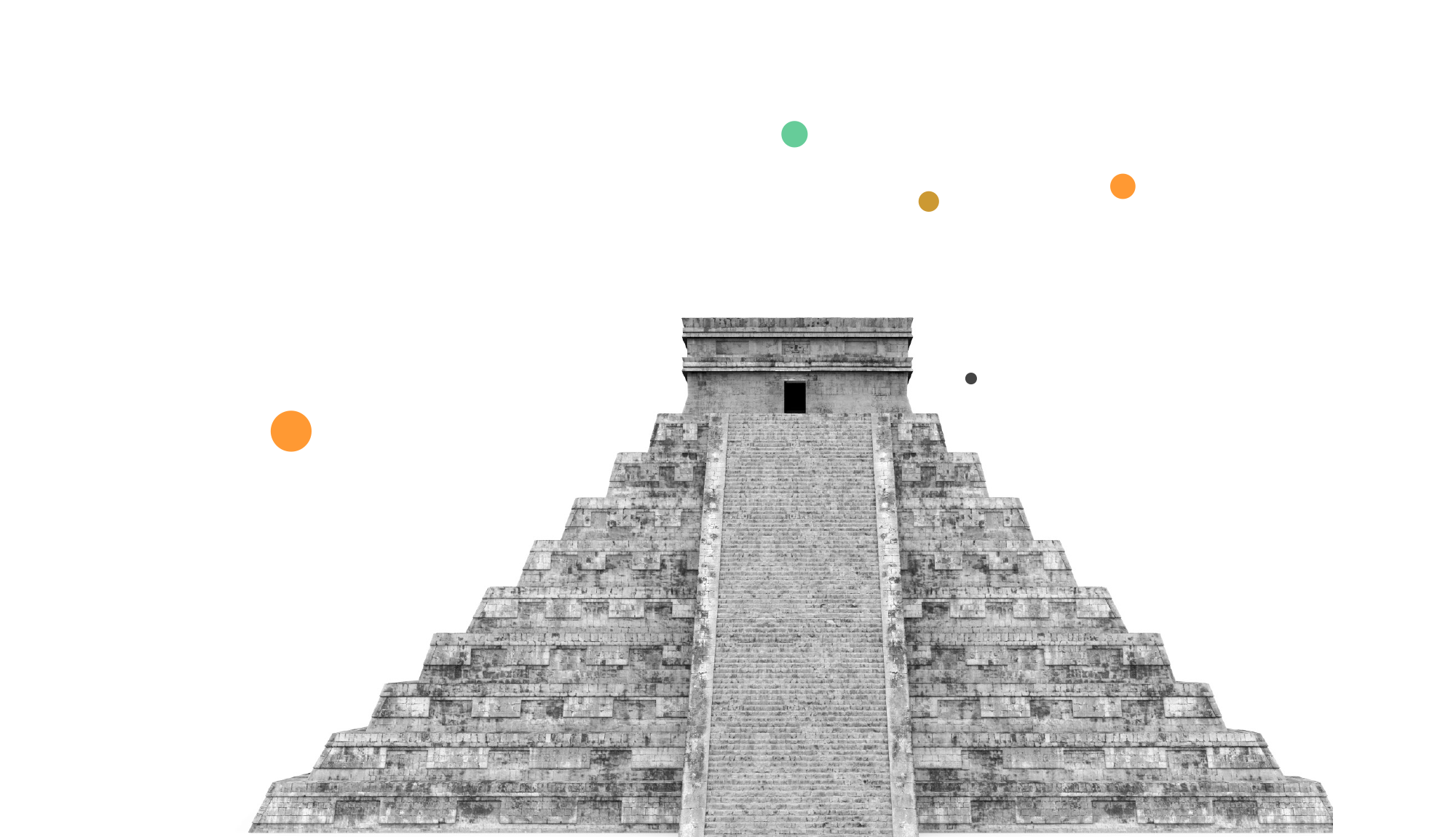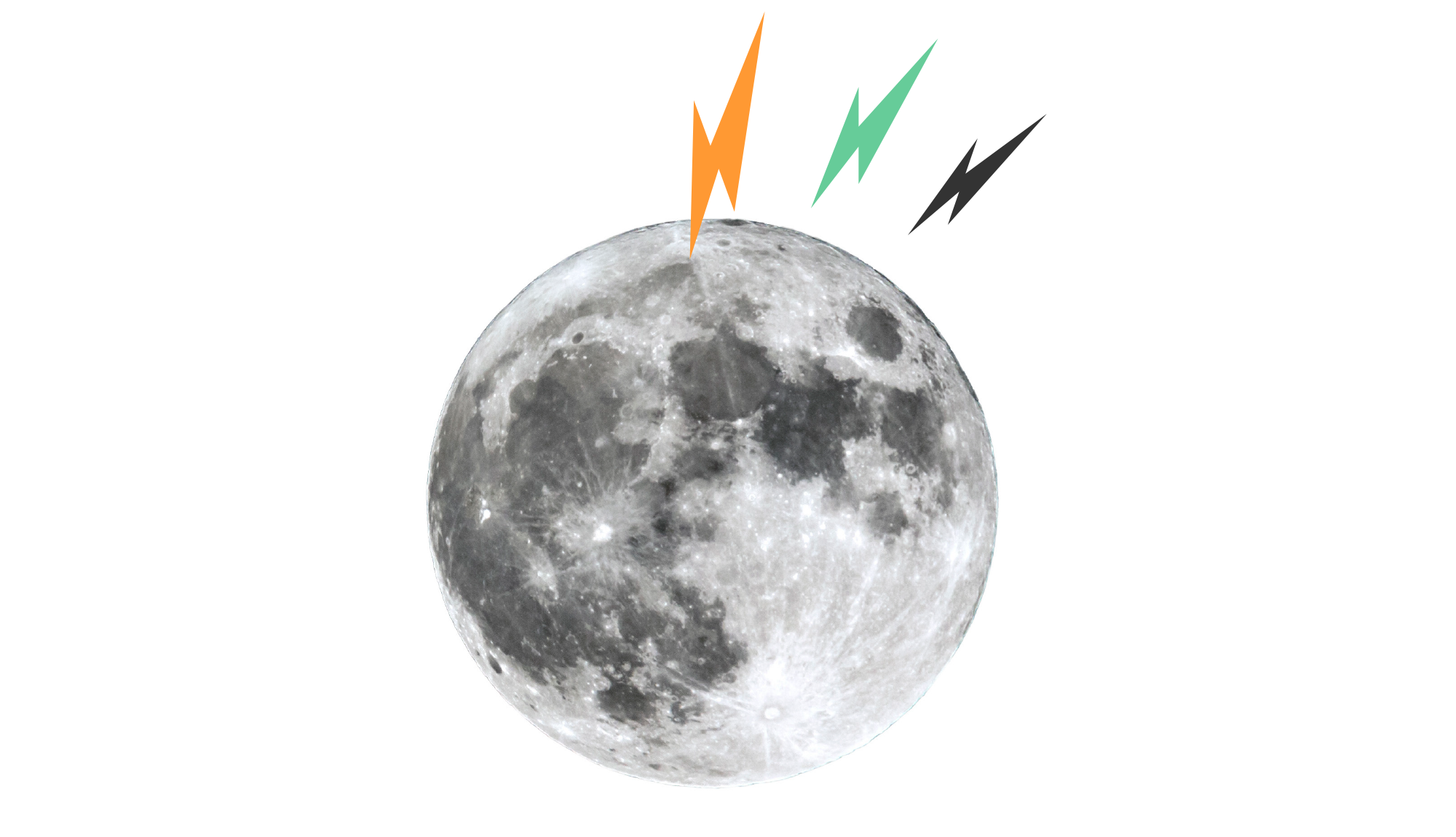
Studying Solar Flares, Sunspots and Other Activity Can Help Protect Earth
In 1859, the Carrington Event, the most intense geomagnetic storm in recorded history, created spectacular auroral displays around the globe, illuminating the night skies so brightly that birds began singing and laborers set off for work, mistakenly believing the sun had risen. Telegraph systems around the world — essential for communication at the time — began to fail as fires sparked and telegraph poles toppled, plunging the “Victorian Internet” into chaos. The cause? A massive solar flare with the energy of 10 billion atomic bombs was spewing electrified gas and subatomic particles toward Earth.
“Thankfully, we haven’t had anything that strong from the sun since,” says Edward Rhodes, a solar expert and professor of physics and astronomy at USC Dornsife. “But the worry now is: Will the sun generate such a severe event in the future that it will cause problems we just aren’t prepared for? Now everything is computerized — that would obviously have major consequences.”
Rhodes, who joined USC Dornsife in 1978, is a pioneer in the field of solar physics known as experimental helioseismology, which uses seismic techniques — similar to those employed by geophysicists in studying the Earth — to explore the internal structure and dynamics of the sun.
Rhodes is trying to understand whether the structure of the sun is changing in response to changes in the solar activity cycle. To do that, he and his team are studying sunspots — planet-sized regions of strong magnetic fields on the sun’s surface that appear darker because they are cooler than their surroundings.
“If we can improve our predictions concerning changes in the number of sunspots and the activity of the solar cycle, then we may be able to improve our knowledge of space weather and determine what is likely to cause major problems on Earth and what isn’t,” Rhodes says.
“There’s still a lot of variability from cycle to cycle in what the sun happens to be doing at any given time,” he says. “By doing fundamental research on the sun as a star to learn more about how it’s changing, we can couple what we learn about those changes with research on space weather to determine whether a particular event will be as strong as in the same phase of the previous cycle, for example.”
Solar Cycles and Sunspots
Solar cycles were first observed in 1610 by Galileo, who also observed sunspots by pointing his small refracting telescope at a paper or cardboard surface and watching the bright disc of the sun, freckled with dark sunspots, move across it. After observing several spots on the front hemisphere of the sun, he realized that when some disappeared only to reappear on the other side of the sun two weeks later, they were the same spots — they had simply been invisible from Earth because they were on the other side of the sun. This information then enabled Galileo to calculate the rotation rate of the sun by measuring how rapidly these spots moved.
The celebrated Italian astronomer and his contemporary, English stargazer Thomas Harriot, were fortunate to be conducting their observations at a period of maximum solar activity. Both had chanced upon a 35-year span of time before the sun went into an extended period of minimum activity, now known as the Maunder Minimum, when there were very few or no sunspots visible on the sun’s surface for about 70 years between 1645 and 1715.
During that period, the Northern Hemisphere of the Earth cooled slightly. Glaciers extended, rivers froze over and temperatures in major northern European cities dropped.
A New Maunder Minimum?
Rhodes and his students have been investigating whether recent claims that the sun was heading for another Maunder Minimum might be true.
“The study of solar cycles shows that the number of sunspots on the sun peaked a number of years ago,” Rhodes says. “As solar cycles became weaker, it began to look a little like a plot that was made of sunspots from Galileo and Harriot leading into that Maunder Minimum.”

Rhodes, assisted by his research group, has been operating the Mount Wilson 60-foot Solar Tower since he joined USC Dornsife in 1978. One of two solar telescopes at Mount Wilson, it is the only one still officially in operation.
Shortly after Rhodes arrived at USC Dornsife, NASA headquarters tapped him to join the European Space Agency team planning the Solar and Heliospheric Observatory (SOHO) spacecraft. The completed spacecraft, which could point its cameras at the sun 24 hours a day, went into orbit in 1996. It became the primary spacecraft instrument until it was supplanted by the new 16-million-pixel camera system aboard the Solar Dynamics Observatory, launched in 2010.
Rhodes and his team used data from SOHO to study Cycle 23. Now, they are studying Cycles 24 and 25 with the Helioseismic and Magnetic Imaging experiment on the Solar Dynamics Observatory. Every two or three months, they receive new data that has been partially processed by Stanford University. Rhodes’ students are trained to process that data so the team can see what the signature of these changes in the frequencies of the solar oscillations looks like at this solar cycle compared to the two previous ones.
“In the last year or so, we can see that maybe the sun isn’t going to be substantially weaker in this, our 25th solar cycle, than in the previous cycle, as was predicted,” Rhodes says. “Also, the anticipated long-term absence of sunspots may not begin in the mid-2030s, as some experts had claimed, and might not occur until centuries in the future.”
Avoid Conflating Solar Activity With Climate Change
Rhodes cautions against linking solar activity with climate change or concluding that a new Maunder Minimum could help offset global warming.
“Because the Maunder Minimum occurred when there were changes in the Earth’s climate, I’ve been concerned that if the sun were to enter another extended 70-year minimum of activity, people would say, ‘See, we told you the sun is making the Earth now cool down a little, that in the past too much solar activity was warming the Earth,’ and that is not the case,” Rhodes says.
Even the small changes in the overall brightness of the sun or total solar irradiance — the amount of sunlight that reaches each square meter at the top of the Earth’s atmosphere every second — don’t appear to be enough to cause any long-term differences in climate.
Surprisingly, at the time when sunspots increase, which one would think would cause the sun to darken slightly, the total solar irradiance increases. Scientists think that, collectively, the non-spot portion of the sun’s atmosphere is brightening more than the sunspots are dimming.
“The fact that it gets brightest when there are the most spots on the sun and then gets a little fainter when there are fewer would mean that if we had 70 years of few spots, then the sun would be just a little fainter,” Rhodes says. “Even a prolonged Maunder Minimum would only briefly, and minimally, offset human-caused warming, and global temperatures would quickly rebound once the event concluded.”
Did You Know:

About 73% — roughly three-quarters of the sun’s mass — consists of hydrogen. The rest, about 25%, is mostly helium, with much smaller quantities of heavier elements, including oxygen, carbon, neon and iron.
27M F
The sun’s surface may be blisteringly hot at 10,340 degrees Fahrenheit, but its outer atmosphere is 300 times hotter. And that’s nothing compared to the temperature at the sun’s core, which is about 27 million degrees Fahrenheit — hot enough to sustain nuclear fusion.
432,000 miles
The sun’s radius is about 432,000 miles — 109 times that of Earth — while its mass is about 330,000 times that of Earth. The sun’s mass comprises about 99.86% of the total mass our solar system.

Gases on the sun’s surface sometimes erupt, shooting solar flares far out into space. These flares can potentially interfere with satellites, disrupting phone, satellite navigation system and television reception.
1% Every
100M Years
The sun is by far the brightest object in the Earth’s sky and is about 13 billion times brighter than the next brightest star, Sirius. At present, the sun is increasing in brightness by about 1% every 100 million years.

About 1 million Earths could fit into the sun.
Many prehistoric and ancient cultures revered the sun as a solar deity. Pyramids, standing stones and massive earthworks are among the impressive structures erected by ancient peoples to track the sun’s movements.

“I’m pickin’ up good vibrations”
By Margaret Crable

Ever walk into a building and think, “Wow, this place has great energy”? You’re in good company. For tens of thousands of years, and in cultures around the world, humanity has been picking up on compelling vibrations.
For the ancient Maya of eastern Mexico, Guatemala and Belize, “k’uh” was the sacred, animating force that permeated all things. “This divine energy motivated the sun, moon and stars, but also gives us our own life and energy,” says Eric Heller, lecturer in anthropology at the USC Dornsife College of Letters, Arts and Sciences.
Revered people such as members of royal families, and places such as mountains that supply fresh water, might contain a higher concentration of “k’uh.” In fact, Maya pyramids that represent mountain peaks and massive slabs of stone that are carved in honor of royalty still draw worshippers.
In Tibetan Buddhism, human life straddles both a physical body and pure energy. The two are connected via wheels or “chakras” dotted along the body. To achieve awakening, chakras must be kept open through practices such as meditation, yoga and chanting, practices that can lead to the transcendent state of enlightenment and absolute energy known as Nirvana.
Shock and awe
In Abrahamic traditions, belief in purely esoteric energy exists mostly on the margins. Yet the notion of a space imbued with sacred energy is certainly familiar to most people with religious beliefs — and even to some without.
Walk into a cathedral and you might find yourself overcome by awe. This feeling could be due to the accumulated power of history. “People have been visiting the same place for a thousand years, so you are engulfed in antiquity,” says USC Dornsife’s David Albertson, associate professor of religion.
But such places may also owe their appeal to those whom USC Annenberg School for Communication and Journalism’s Diane Winston dubs “spiritual technicians” — people who know how to create a sacred space.
“This could be the architect of a cathedral or clergy preaching a sermon. There are many ways to construct a spiritual experience,” says Winston, Knight Center Chair in Media and Religion and associate professor of journalism and religion.
The modern concept of healing focuses uniquely on the body and mind. In non-Western healing practices, energy that expands out into the community, families and the cosmos can also be healed.”
Quantum connections
Skeptics of this concept of energy may be intrigued to learn there are some compelling parallels between folk conceptions of energy and emergent scientific theories surrounding the very nature of our reality.
Based on an Eastern belief that vital energy flows through our bodies, the Japanese practice of Reiki is a healing technique believed to reduce stress and encourage relaxation through the transference of universal energy. Practitioners even claim it can be done remotely.
“The modern concept of healing focuses uniquely on the body and mind. In non-Western healing practices, energy that expands out into the community, families and the cosmos can also be healed,” says Thomas Ward, associate professor (teaching) of anthropology.
Although medical studies have not confirmed the veracity of Reiki’s healing powers, its underlying philosophy may not be completely off base.
Last year, the Nobel Prize in physics was awarded to a trio of scientists for experiments that overturned the reality of the universe as we know it, laying bare a profound mystery at the heart of reality. Their experiments focused on quantum particles, the smallest physical particles in the universe. Their findings show that if these particles once touched, they continue to have an effect on each other after they’ve been separated.
If this theory proves correct — and given that most elements of our bodies were formed in ancient stars over the course of billions of years — maybe the spiritual idea that life may be connected across distance, or even time, doesn’t seem quite so farfetched, Ward notes. Perhaps Reiki’s practitioners, and other proponents of an interconnected and cosmic energy, have indeed picked up on a subtle truth humming within the fabric of our universe.
Earth(quakes), Wind and Fire
By Margaret Crable

A dozen or so times a year, Southern California residents are visited by strange gusts so strong they can uproot trees and send roof shingles flying. Known as the Santa Ana winds, they can reach up to 100 miles per hour and are generated when hot, high-pressure desert air from the east meets cooler air from the coast.
These winds are just one expression of the tremendous natural energy that surrounds us. Mount Shasta near the northern tip of the state is an active volcano. The infamous San Andreas Fault that runs through 750 miles of California has the potential to cause a magnitude 8.0 earthquake.
The universe around us isn’t any more peaceful. Every year, stars explode in the skies with the force of countless nuclear bombs. Even the tranquil moon is quaking.
Shake, rattle and roll
Our planet is energetic down to its molten core, which Dean’s Professor of Earth Sciences John Vidale, former director of the Southern California Earthquake Center based at USC Dornsife, recently discovered may shift rotational speedevery six years or so. As the motion changes, our days lengthen or shorten because of energy passed back and forth between the solid inner core and the rocky mantle above.
Above the core, the tectonic plates of Earth’s crust are in constant motion. Their subtle shifting generates friction as the plates scrape against each other. Most of this built-up energy is released through geothermal heat, but sometimes it results in earthquakes that can be devastatingly strong. The recent deadly quakes in Turkey and Syria gave off the equivalent energy of 8 million tons of detonated TNT.
In California, earthquakes aren’t the only unpredictable energy. Wildfires rip through the land with fierce intensity each year. They can reach temperatures of 2,000 degrees Fahrenheit — one-fifth the heat of the sun’s surface. As periods of drought extend due to climate change, fires are only getting bigger.
“In 2020, fires in California burned more than 4 million acres and spawned a new term: ‘the gigafire,’ a wildfire that burns more than 1 million acres,” says William Deverell, professor of history, spatial sciences and environmental studies. Smoke from wildfires recently tampered with another form of our natural energy: Solar energy production in California plunged during the raging 2020 fire season due to smoky skies.
In 2020, fires in California burned more than 4 million acres and spawned a new term: ‘the gigafire,’ a wildfire that burns more than 1 million acres.”
Star power
Out in the galaxy, energy puts on an even grander show. “Moonquakes” regularly wobble our moon when meteorites strike and shake it, while Earth’s gravitational pull squeezes its interior and buckles the surface. Dying stars, dubbed supernovas, explode with a strength that’s an octillion (a billion, billion, billion) times more powerful than our biggest nuclear bombs. And black holes exert a gravitational pull so potent that not even light can escape.
There’s another, stranger energy out there as well: dark energy. Not yet totally understood, it’s the name we give to the force behind the accelerating expansion of the universe. If this expansion continues unabated, some scientists think it could result in the ultimate energetic showdown.
“It could end up ripping our universe apart,” says USC Dornsife’s Kris Pardo, assistant professor of physics and astronomy.
We’ve got some time to prepare, though. Even in one of the worst-case scenarios, scientists don’t anticipate the “big rip” (if it even happens) for another 22 billion years.